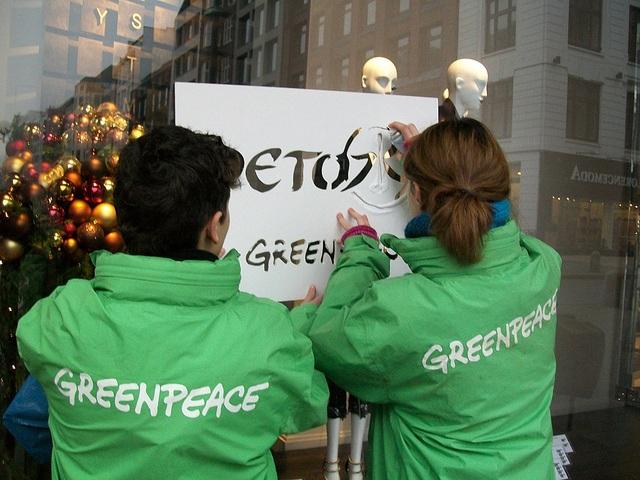
The global fashion industry has a massive impact on the environment. This impact extends from the pesticides used to grow fibers such as cotton to the impact textile dyes have on water in countries where regulations tend to go unenforced.
Since 2011, Greenpeace has called on leading brands to eliminate hazardous chemicals from their supply chains. And it achieved some impressive: Seventy-six leading fashion houses made the commitment to detoxify their operations by the end of this decade. In what Greenpeace calls its third annual “Detox Catwalk,” the environmental organization lauds the companies that are changing their ways, while rattling the cages of companies it believes are doing nothing.
So who scores highly on this front, according to Greenpeace?
The three companies have sold Greenpeace on their believable timelines, strong action and actual the execution of their plans -- and they happen to be giants in the fast fashion space. Inditex (which operates the popular Zara chain), Benetton and H&M won plaudits for moving to eliminate toxins such as PFCs to making progress on their long-term “zero discharge” plans.
Greenpeace says these three companies, which earn almost $50 billion in combined revenues, back up their promises with transparency and concrete plans. The organization’s assessment of Inditex, for example, applauds the company for vigorously going beyond the 11 groups of chemicals Greenpeace targeted for elimination.
As for other leading fashion brands, many of the most recognizable brands are making progress, especially on transparency. But many are lag on the Greenpeace list because they were slow to develop a plan stating how they will remove toxins from their manufacturing processes. The Italian fashion house Miroglio Group, for example, has made progress on Greenpeace’s three big issues: ceasing the use of PFCs, a plan to stop using toxic chemicals by 2020 and transparent disclosure about their progress. Other firms, however, still have work to do, and that list includes Adidas, Levi Strauss, Mango, Marks and Spencer, and Puma. Luxury brands including Burberry and Valentino are also falling behind, in Greenpeace's view.
Then there are the companies Greenpeace accused of going backward. That roster includes Esprit, Limited and the Finnish sportswear company Li-Ning. And despite what the company says is its leadership on sustainable chemistry, Nike also falls under this category.
Many of the European companies Greenpeace ranks, however, should see improvement due to the actions promised by an industry group representing the largest textile manufacturing district in Europe. Earlier this year, 20 companies from the Prato district in Milan announced they would commit to Greenpeace’s call to clean up their supply chains by 2020. Clothing manufactured appear under coveted labels including Armani, Burberry, Prada and Valentino.
Several leading brands, however, are apparently doing nothing and in Greenpeace’s words “have failed to take responsibility.” The list runs all over the garment industry’s price spectrum, with Armani, Bestseller, Diesel, Hermes and Versace earning the equivalent of what Greenpeace would call an “F” grade in describing their efforts.
In Greenpeace’s eyes, which in general always place a distrustful watch on the world’s largest companies, we've certainly seen progress in what it insists is a dirty and irresponsible industry. But if the earth’s waterways are going to heal from years of discharging toxic chemicals, much additional work lies ahead.
Image credit: Flickr/Greenpeace Hamburg

Leon Kaye has written for 3p since 2010 and become executive editor in 2018. His previous work includes writing for the Guardian as well as other online and print publications. In addition, he's worked in sales executive roles within technology and financial research companies, as well as for a public relations firm, for which he consulted with one of the globe’s leading sustainability initiatives. Currently living in Central California, he’s traveled to 70-plus countries and has lived and worked in South Korea, the United Arab Emirates and Uruguay.
Leon’s an alum of Fresno State, the University of Maryland, Baltimore County and the University of Southern California's Marshall Business School. He enjoys traveling abroad as well as exploring California’s Central Coast and the Sierra Nevadas.














